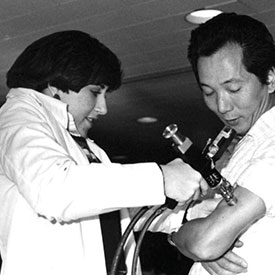 In 1969, the University of Alabama at Birmingham was born—an independent institution rooted in the Magic City, created from the union of a university extension center and a pioneering academic medical center. Since then, UAB has saved lives, solved problems, expanded knowledge, and opened doors. The ideas, innovations, and advances that emanate from our campus have energized Birmingham and transformed Alabama into a destination for experts and innovators ready to change the world.In celebration of UAB’s 50th anniversary, here we take a look back UAB Medicine’s past 50 years.
In 1969, the University of Alabama at Birmingham was born—an independent institution rooted in the Magic City, created from the union of a university extension center and a pioneering academic medical center. Since then, UAB has saved lives, solved problems, expanded knowledge, and opened doors. The ideas, innovations, and advances that emanate from our campus have energized Birmingham and transformed Alabama into a destination for experts and innovators ready to change the world.In celebration of UAB’s 50th anniversary, here we take a look back UAB Medicine’s past 50 years.
Photos and captions courtesy of UAB Archives
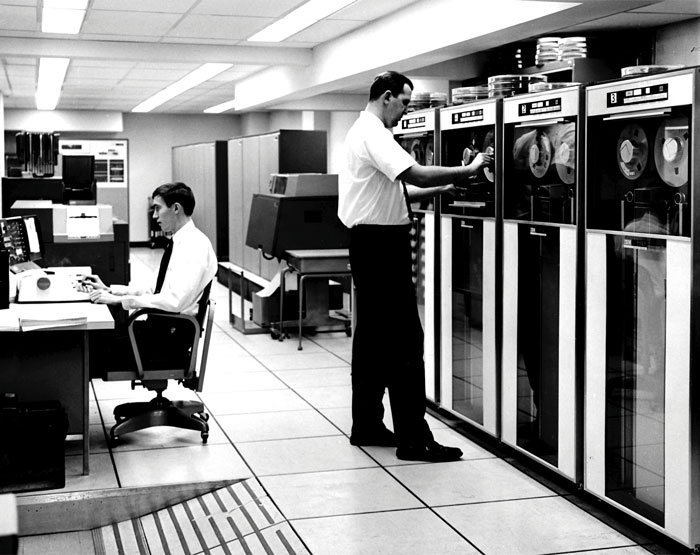 Larry Davis (left) and Floyd Miller (right) operate the IBM computers located in the basement of University Hospital, circa 1968. An automated accounting system for hospital billing and payroll was implemented in 1967.
Larry Davis (left) and Floyd Miller (right) operate the IBM computers located in the basement of University Hospital, circa 1968. An automated accounting system for hospital billing and payroll was implemented in 1967.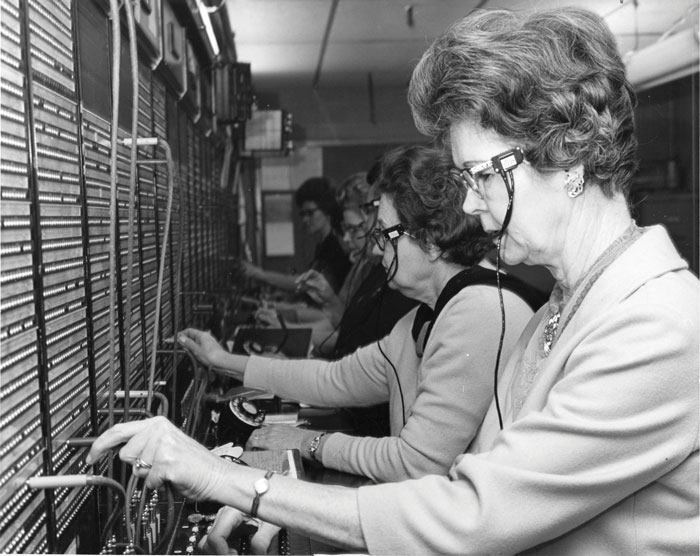 Located within University Hospital, the switchboard for the medical center (pictured circa 1968) was the largest private board exchange in the state and employed a team of 16. The switchboard operators were also responsible for the hospital’s paging and emergency alarm systems.
Located within University Hospital, the switchboard for the medical center (pictured circa 1968) was the largest private board exchange in the state and employed a team of 16. The switchboard operators were also responsible for the hospital’s paging and emergency alarm systems.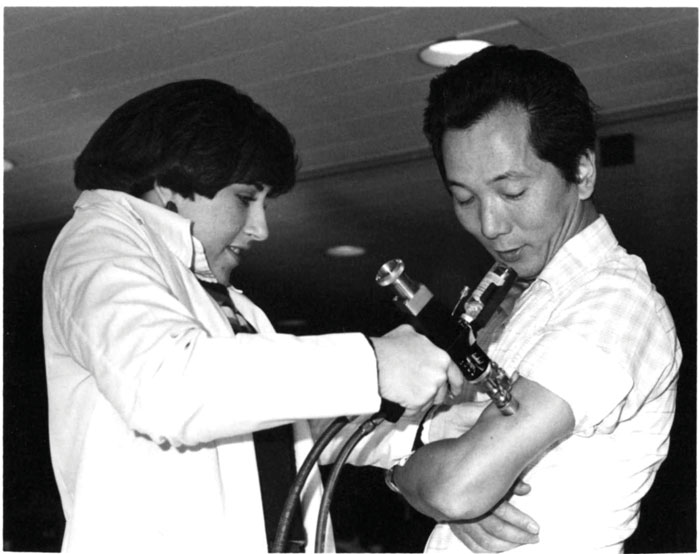 University Hospital was the location for UAB staff and employees to receive an inoculation as part of a nationwide swine flu vaccination effort held during fall 1976.
University Hospital was the location for UAB staff and employees to receive an inoculation as part of a nationwide swine flu vaccination effort held during fall 1976.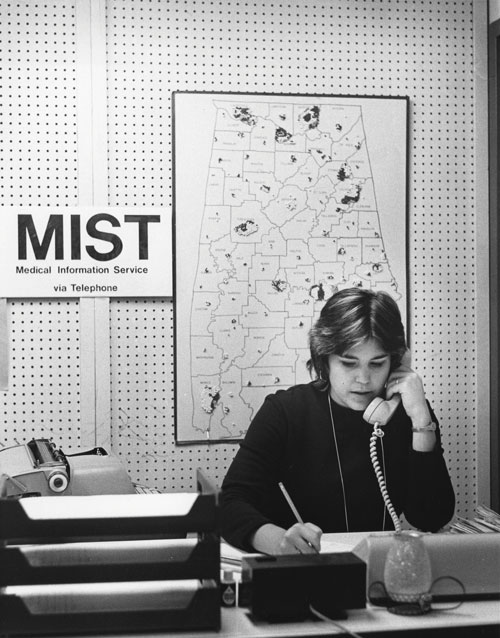 An attendant answers an incoming Medical Information Service via Telephone (MIST) call circa 1975. MIST, which began operation in August 1969, allowed Alabama physicians to call and discuss medical problems with specialists on duty at the UAB Medical Center. Later, the program expanded to physicians from across the country, and it became a model for similar programs in other states.
An attendant answers an incoming Medical Information Service via Telephone (MIST) call circa 1975. MIST, which began operation in August 1969, allowed Alabama physicians to call and discuss medical problems with specialists on duty at the UAB Medical Center. Later, the program expanded to physicians from across the country, and it became a model for similar programs in other states.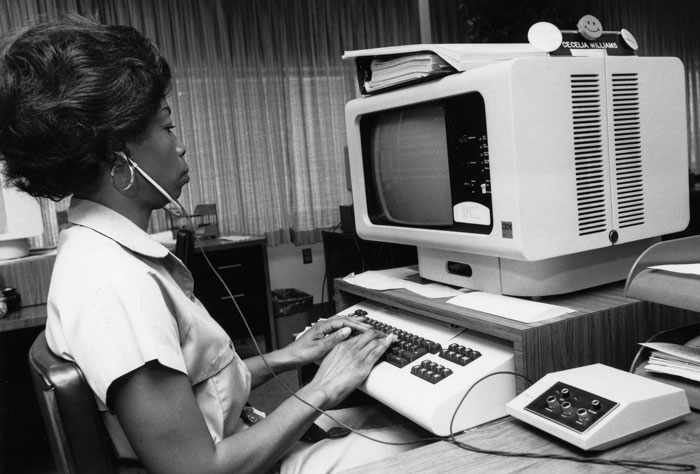 Cecelia Williams, transcription supervisor, uses one of six new word processing terminals installed in the medical records office at University Hospital, circa 1982. UAB was the first hospital in the state to use word processors for transcription. Departmental staff used the new terminals to complete transcription services for UAB physicians.
Cecelia Williams, transcription supervisor, uses one of six new word processing terminals installed in the medical records office at University Hospital, circa 1982. UAB was the first hospital in the state to use word processors for transcription. Departmental staff used the new terminals to complete transcription services for UAB physicians.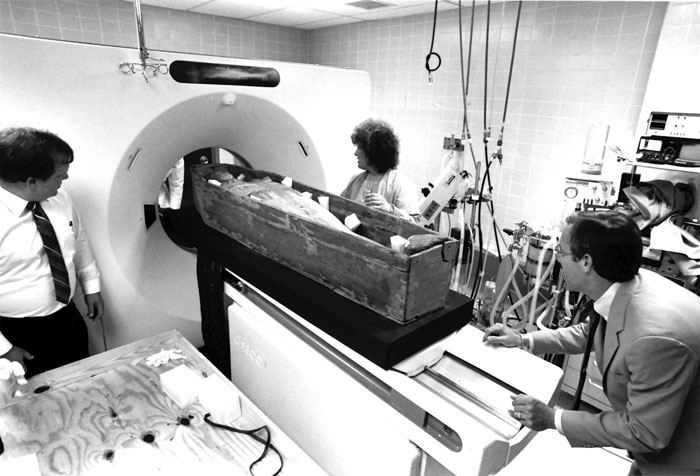 Prior to being displayed at the Birmingham Museum of Art as part of the 1988 Birmingham Festival of Arts, the mummy of an Egyptian female was brought to UAB for examination. Officials used a CAT scan to examine the remains of the 2,000-year-old woman, who became the “oldest patient” ever examined at University Hospital.
Prior to being displayed at the Birmingham Museum of Art as part of the 1988 Birmingham Festival of Arts, the mummy of an Egyptian female was brought to UAB for examination. Officials used a CAT scan to examine the remains of the 2,000-year-old woman, who became the “oldest patient” ever examined at University Hospital.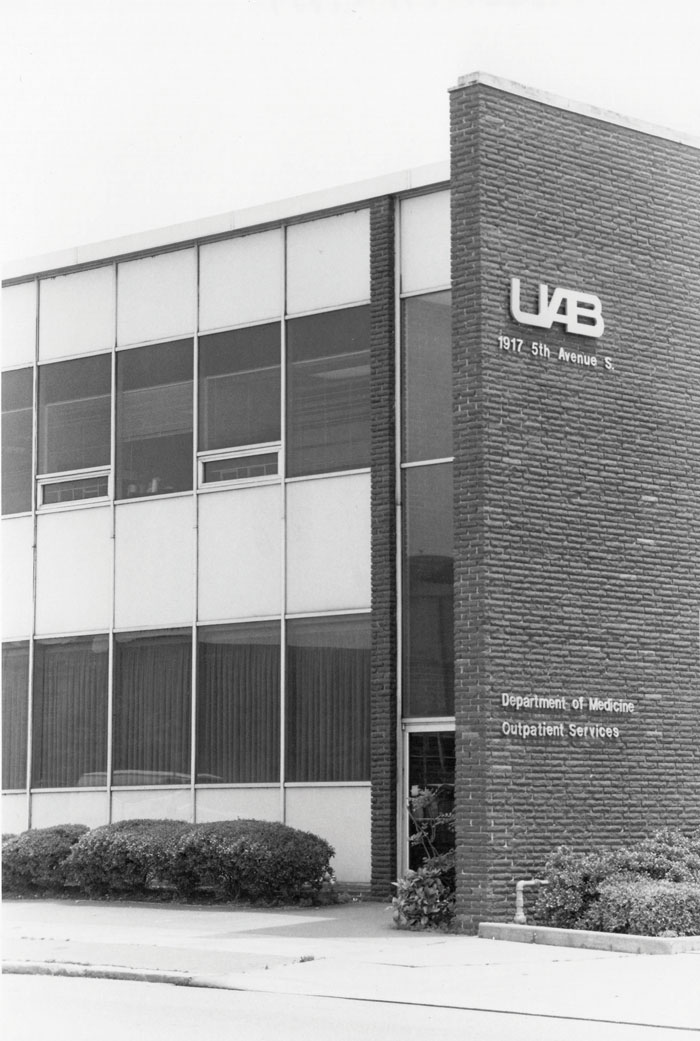 In response to the growing epidemic, the 1917 Clinic, an outpatient clinic for AIDS patients, was opened at UAB in January 1988. It was founded and originally directed by Michael Saag, M.D. The clinic name originated from the building’s street address at 1917 Fifth Avenue South in order to protect the confidentiality of the patients.
In response to the growing epidemic, the 1917 Clinic, an outpatient clinic for AIDS patients, was opened at UAB in January 1988. It was founded and originally directed by Michael Saag, M.D. The clinic name originated from the building’s street address at 1917 Fifth Avenue South in order to protect the confidentiality of the patients.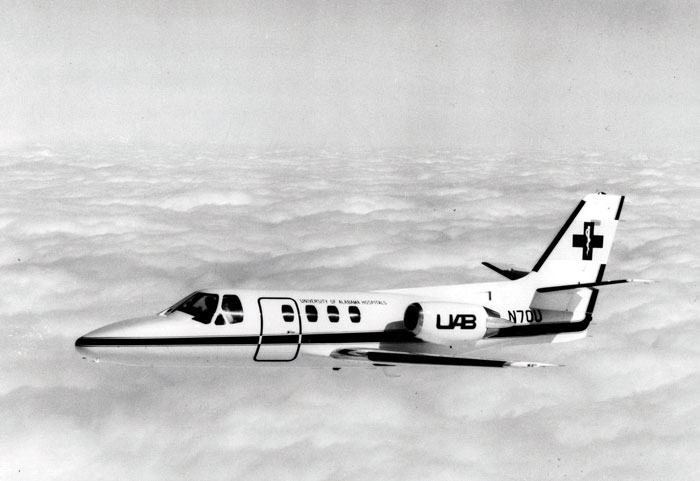 UAB MedJet in flight, circa 1990. The UAB Critical Care Transport Service began in 1983 with transportation by specially equipped ambulance or medical jet. The CCT Service has served more than 48,000 patients and has transported them to 46 states and 38 countries.
UAB MedJet in flight, circa 1990. The UAB Critical Care Transport Service began in 1983 with transportation by specially equipped ambulance or medical jet. The CCT Service has served more than 48,000 patients and has transported them to 46 states and 38 countries.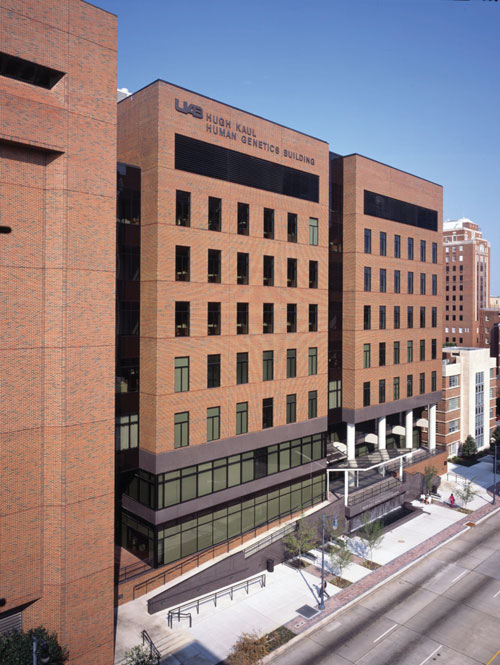 The Kaul Human Genetics Building was constructed on the site of UAB’s Tidwell Hall, and it was dedicated on May 21, 2001. The eight-story Kaul Building became home to the genetics department as well as the new Howell and Elizabeth Ann Heflin Center for Human Genetics and the Finley Conference Center. The Finley Conference Center was named in honor of Wayne Finley, M.D., Ph.D., and Sara Finley, M.D., longtime UAB faculty who established the first genetics laboratory in the southeastern U.S.
The Kaul Human Genetics Building was constructed on the site of UAB’s Tidwell Hall, and it was dedicated on May 21, 2001. The eight-story Kaul Building became home to the genetics department as well as the new Howell and Elizabeth Ann Heflin Center for Human Genetics and the Finley Conference Center. The Finley Conference Center was named in honor of Wayne Finley, M.D., Ph.D., and Sara Finley, M.D., longtime UAB faculty who established the first genetics laboratory in the southeastern U.S.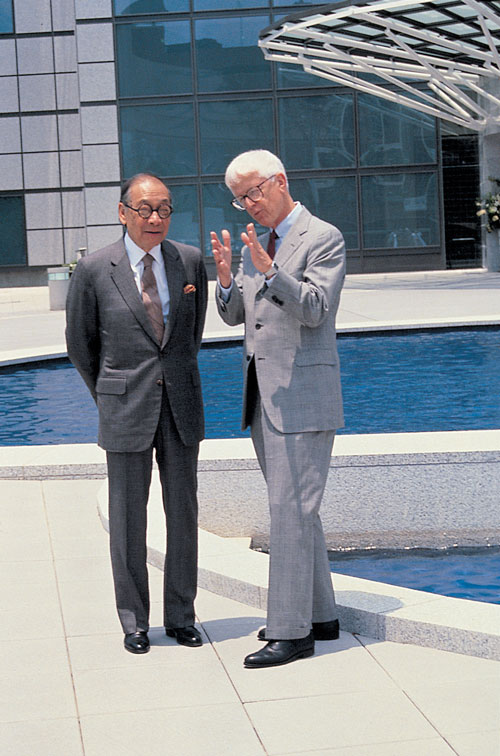 Architect I.M. Pei and John Kirklin, M.D., cardiac surgery pioneer and former chair of the Department of Surgery, talking in front of fountain at The Kirklin Clinic, circa 1992. Kirklin was instrumental in convincing world-famous architect Pei to design the clinic.
Architect I.M. Pei and John Kirklin, M.D., cardiac surgery pioneer and former chair of the Department of Surgery, talking in front of fountain at The Kirklin Clinic, circa 1992. Kirklin was instrumental in convincing world-famous architect Pei to design the clinic.